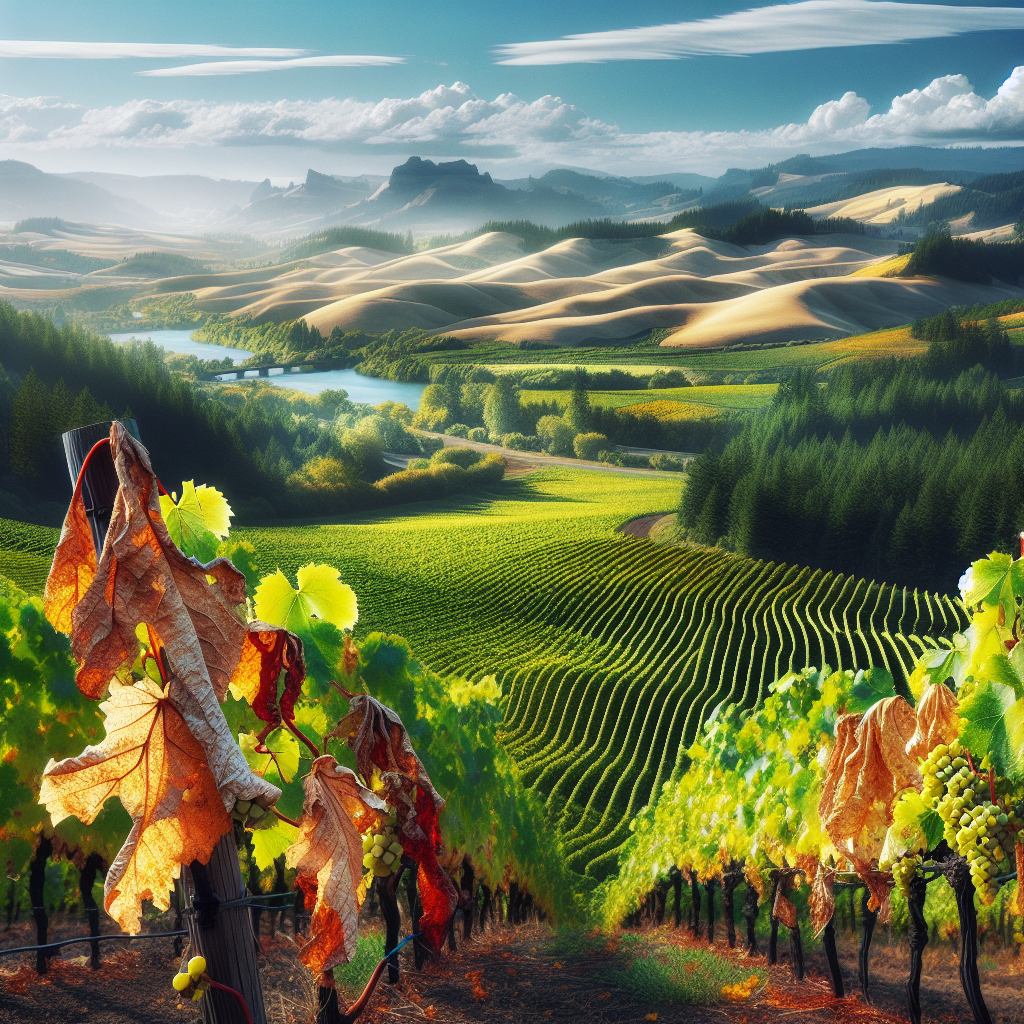A Taste of Change: Climate and Oregon’s Wine Industry
In the famed land of luscious berries, towering Douglas fir trees, and atmospheric rocky coastlines, Oregon is home to another treasure – vineyards producing some of the world’s finest wines. The region’s fertile, volcanic soil and moderate weather patterns craft comprehensive and delicious flavors that speak for themselves, as every Oregonian will attestingly nod. But with the hot topic of climate change impacting everything from Oregon’s beloved Crater Lake clarity to the migration of its Chinook salmon, it’s no wonder that our cherished wine industry is feeling the ripple effects too.
The Terroir of Oregon
In the heart of Willamette Valley, with its rosy sunsets dipping behind rolling hills, lies a small slice of heaven for wine lovers. Here, its distinct terroir – that magical blend of soil, sun, and climate – makes a jealously-guarded recipe for Oregon’s trademark Pinot Noir.
Less known but no less notable, Southern Oregon’s Rogue and Umpqua valleys, and the Columbia Gorge AVA (American Viticultural Area), each offer unique microclimates that birth a kaleidoscope of varietals – from warm-weather loving Syrah and Viognier to cooler grapes like Gewurztraminer and Riesling.

But as Oregonians understand all too well, the weather can be as unpredictable as a game of cornhole at a Mt. Hood campout. And climate change is just stirring the pot even more.
Brewing Changes and Uncorking Challenges
So how exactly is climate change impacting the Oregon wine industry? As anyone who’s tried to plan a BBQ in Oregon knows, weather can flip faster than a pancake at Stepping Stone Cafe. Increased temperatures, fluctuations in rainfall, and extreme events – think the wildfire-fueled smoke taint of recent years – are starting to make a splash in our wine glass.
Remember that iconic Oregon Pinot Noir? It’s largely thanks to our cool-climate, balanced by warm summers and wet winters that make the grapes feel right at home. But toss in hotter, drier conditions, and suddenly those dependable vines are sweating harder than a long-distance hiker on the Timberline Trail.
Changing conditions also have the potential to throw a wrench in the vintage’s uniformity. One year could yield a Pinot Noir with a lush berry flavor profile, and the next – a wine more reminiscent of the savory, earthy tones we might associate with a wander through Forest Park mid-autumn.
Adapting Like Ducks to Water
Despite these challenges, Oregonians are known for their resilience. We’re no strangers to adversity. It’s part of the kickoff trivia at a Timbers’ game, really. Our wine industry’s adaptability might be tested, but just like resilient Douglas Fir withstanding forest fires, our vintners and vineyard owners are innovative in their approach.
Key adaptations such as adjusting harvest times, employing sustainable practices, and considering the use of heartier grape varietals are showing promise. Wineries like Brooks in the Willamette Valley are making conscious decisions to help mitigate climate change, using farming practices that sequester carbon and sourcing energy from on-site solar panels. Others are exploring lesser-known varietals that might be better suited for warmer climates, providing an opportunity for an exciting evolution in Oregon’s wine landscape.
A Toast to the Future
So, what’s the takeaway for us Oregonians? When we fill our glass with the fruit of our land under the flicker of a Portland twilight, we’re not only savoring a world-class product – we’re drinking in the resilience, adaptability, and forward-thinking spirit of our wine industry.
Let’s remember to support our local vineyards, whether it’s a glass of the latest smooth Willamette Valley Pinot Noir or a bold Tempranillo from the Applegate Valley. We can do our part the Oregon way – savouring each sip and appreciating these miniature works of art even more, knowing the complexities of their creation.
So here’s to Oregon’s wine industry – fighting the good fight and adapting to change just like the rest of us. And the next time you’re hiking on the Historic Columbia River Highway or catching a sunset at Cannon Beach with a robust red, make a toast to the love and effort that keeps our vineyards thriving despite the changing climate. Because no matter the forecast, Oregon’s wine industry always seems ripe for resilience. Good on ya, Oregon!
